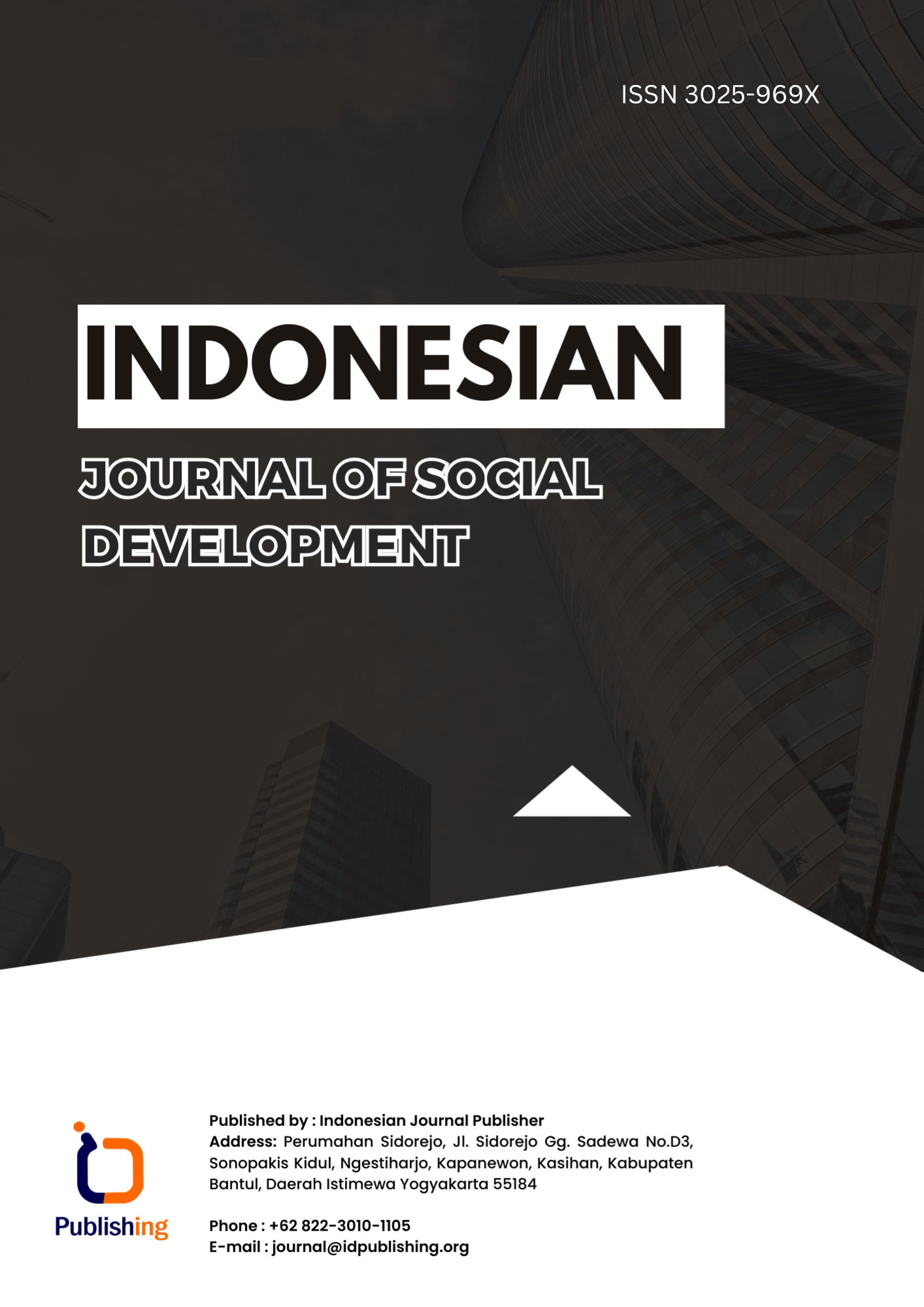An Analysis of Perlocutionary Speech Acts: Case Study in the 2024 Presidential Candidate Debate
DOI:
https://doi.org/10.47134/jsd.v2i3.3378Keywords:
Perlocutionary Speech Acts, Presidential Debates, Political Communication, Cultural InfluenceAbstract
This study explores the use of perlocutionary speech acts by presidential candidates during the 2024 presidential debate, focusing on the types employed, their frequency, and how cultural backgrounds influence interpretation. Using a qualitative descriptive method, the research analyzed the third segment of the first 2024 debate, aired on December 12, 2023. The findings identified 24 instances of perlocutionary speech acts, including actions such as embarrassing, irritating, persuading, attracting attention, deceiving, and encouraging. These acts demonstrate the strategic use of language to achieve specific effects on the audience. Moreover, the study highlights that cultural values, ethnic backgrounds, and political experiences significantly shape candidates' interpretations and responses to these speech acts. The research provides insights into the interplay between language use and cultural influences in political communication, offering a deeper understanding of rhetorical strategies in high-stakes political discourse
References
Abdalhadi, H., Al-Khawaldeh, N., Al Huneety, A., & Mashaqba, B. (2023). A corpus-based pragmatic analysis of Jordanians Facebook status updates during COVID-19. Ampersand, 10. https://doi.org/10.1016/j.amper.2022.100099
Asoulin, E. (2016). Language as an instrument of thought. In Glossa (Vol. 1, Issue 1). Ubiquity Press. https://doi.org/10.5334/gjgl.34
Astuti, D., Nurhayati, W., & Yuwartatik, &. (2016). Wahyu A. Dwi & Yuwartatik. 2016. Illocutionary and Perlocutionary Acts on Main Characters Dialogues in John Milne’s Novel: The Black Cat. Indonesian Journal of Language Teaching and Linguistics, 1(1), 67–96. https://doi.org/10.30957/ijoltl.v1i1.7
Ayu, I., Wedasuwari, M., Shintiyah, D., Dwi, N. M., Wulandari, S., & Abstrak, A. I. (2022). Analisis Tidak Tutur Perlokusi Dalam Podcast Notif#1. Jurnalistrendi: Jurnal Linguistik, Sastra Dan Pendidikan, 7(2), 181–190. https://doi.org/10.51673/jurnalistrendi.v7i2.1123
Ayu, I., Wedasuwari, M., Shintiyah, D., Dwi, N. M., Wulandari, S., & Abstrak, A. I. (2022). Analisis Tindak Tutur Perlokusi dalam Podcast Notif#1. Jurnal Linguistik, Sastra, Dan Pendidikan, 7(2), 181–190. https://doi.org/10.51673/jurnalistrendi.v7i2.1123
Braun, V., & Clarke, V. (2022). Thematic Analysis. SAGE Publication.
Chairani, M., Sofyan, D., & Hardiah, M. (2020). Illocutionary and Perlocutionary Acts on YouTube Videos Employed by Niana Guerrero. Journal of English Education and Teaching (JEET) e-ISSN: 262, 4(3), 413–430. https://doi.org/10.33369/jeet.4.3.413-430
Creswell. (2014). Research design: Qualitative, quantitative, and mixed method approaches (4th ed.). SAGE Publications.
Feruza, K. (2024). A Brief Overview of Pragmatics: Language in Context. American Journal of Philological Sciences, 4(3), 24–31. https://doi.org/10.37547/ajps/Volume04Issue03-05
Hornbæk, K., & Oulasvirta, A. (2017). What is interaction? Conference on Human Factors in Computing Systems - Proceedings, 2017-May, 5040–5052. https://doi.org/10.1145/3025453.3025765
Isphording, I. E., & Otten, S. (2014). Linguistic barriers in the destination language acquisition of immigrants. Journal of Economic Behavior and Organization, 105, 30–50. https://doi.org/10.1016/j.jebo.2014.03.027
Kikerpill, K. (2023). The crime-as-communication approach: Challenging the idea of online routine activities by taking communication seriously. Journal of Economic Criminology, 2, 100035. https://doi.org/10.1016/j.jeconc.2023.100035
Leech, G. (1989). Principles of Pragmatics. In Longman Linguistics Library.
Omanee, B. (2021). A Pragmatic Analysis of The Effects of Youtube in Acquiring Request and Apology Speech Acts on Thai EFL Hospitality Undergraduates [Universiti Utara Malaysia]. https://etd.uum.edu.my/id/eprint/9311
Pezzulo, G., Donnarumma, F., Dindo, H., D’Ausilio, A., Konvalinka, I., & Castelfranchi, C. (2019). The body talks: Sensorimotor communication and its brain and kinematic signatures. In Physics of Life Reviews (Vol. 28, pp. 1–21). Elsevier B.V. https://doi.org/10.1016/j.plrev.2018.06.014
Sejati, A. P., Ningrum, D., Ridwan, H., & Handayani, S. R. (2024). Perlocutionary Speech Act of Conveying Bad News in Medical Communication. Journal of Language and Literature, 24(1), 279–289. https://doi.org/10.24071/joll.v24i1.7122
Merriam, S. B., & Tisdell, E. J. (2015). Qualitative Research: A Guide to Design and Implementation (4th ed.). Josey-Bass. www.wiley.com/go/permissions
Tseng, M. Y. (2018). Creating a theoretical framework: On the move structure of theoretical framework sections in research articles related to language and linguistics. Journal of English for Academic Purposes, 33, 82–99. https://doi.org/10.1016/j.jeap.2018.01.002
Wang, X. (2023). A Conceptual Review on EFL Teachers’ Motivation and Engagement in Flipped Classrooms: A Social Networking Platform. Language Related Research, 14(3), 239–264. https://doi.org/10.29252/LRR.14.3.10
Yule, G. (1996). Introductions to Language Study (1st ed.). Oxford University Press.
Downloads
Published
How to Cite
Issue
Section
License
Copyright (c) 2024 Tiara Miranda, Yanuarius Yanu Dharmawan

This work is licensed under a Creative Commons Attribution 4.0 International License.










